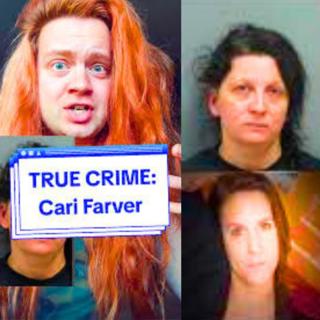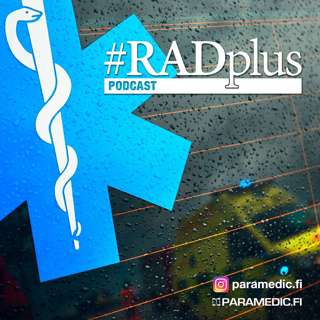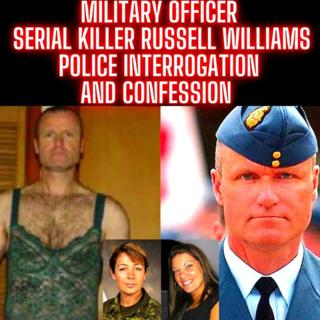
Military Officer Serial Killer Russell Williams -Police Interrogation and Confession SHOCKING
Military Officer Serial Killer Russell Williams -Police Interrogation and Confession SHOCKING Bob McKeown deconstructs the interrogation and shocking confession of Russell Williams. From his initial denial to the full declaration of guilt, the fifth estate deciphers one of the most compelling and distressing confessions in Canadian criminal history with the help of people who know the art of interrogation better than anyone else. Investigation and arrest Jessica Lloyd, 27, had vanished on January 28, 2010. Investigators identified distinctive tire tracks left in snow near her home. One week after her disappearance, the Ontario Provincial Police conducted an extensive canvassing of all motorists using the highway near her home from 7 pm on February 4, 2010, to 6 am on the following day, looking for the unusual tire treads. Williams was driving his Pathfinder that day — rather than the BMW he usually drove — and an officer noticed the resemblance of his tire treads. These were subsequently matched to the treads near Lloyd's home. On February 7, 2010, the CFB Trenton base commander was at his newly built home in Ottawa, where his wife lived full-time and he lived part-time, when he was called by the OPP in Ottawa and asked to come in for questioning. During the 10-hour interview he confessed to the numerous crimes of which he was later convicted. Early the next morning Williams led investigators to the woman's body in a secluded area on Cary Road, about 13 minutes away from where he lived. Williams was also charged in the death of Corporal Marie-France Comeau, a 37-year-old military flight attendant based at CFB Trenton, who had been found dead inside her home in late November 2009. Along with the murder charges, Williams was charged with breaking and entering, forcible confinement, and the sexual assault of two other women in connection with two separate home invasions near Tweed, Ontario in September 2009. According to reports, the women had been bound in their homes and the attacker had taken photos of them. Williams was arraigned and remanded into custody on Monday, February 8, 2010. The Canadian Forces announced that day that an interim commander would soon be appointed to replace him (Dave Cochrane took over 11 days later), and removed his biography from the Department of National Defence website the following day. Hours after the announcement of Williams' arrest, police services across the country reopened unsolved homicide cases involving young women in areas where Williams, a career military man, had previously been stationed. According to news reports, police began looking at other unsolved cases based on a full statement that Williams gave to police. A week after his arrest, investigators reported that, along with hidden keepsakes and other evidence they had found in his home, they had matched a print from one of the homicide scenes to his boot. In addition to the four primary incidents, the investigation into Williams includes probes into 48 cases of theft of women's underwear dating back to 2006. In the searches of his Ottawa home, police discovered stolen lingerie that was neatly stored, catalogued, and concealed. In April 2010, Williams was placed on suicide watch after he tried to kill himself by wedging a stuffed cardboard toilet paper roll down his throat. Confession On February 7, 2010, Williams was interrogated at Ottawa Police Service headquarters by Detective Sergeant Jim Smyth, a member of the Ontario Provincial Police's Behavioural Sciences Unit. The interview started at 3 p.m. and by 7:45 p.m. he was describing his crimes. The interrogation lasted approximately ten hours. Excerpts of the confession were shown in court at Williams' sentencing hearing on October 20, 2010. In the confession, Williams gave details of his crimes, including the sexual assaults in Tweed and 82 break-ins and thefts. Some of them occurred in Ottawa homes within walking distance of his Orleans, Ontario home where he lived with his wife. Other break-ins and thefts occurred in Belleville, and in Tweed, where the couple had had a cottage since 2004. He also told police where they could find evidence, including hidden keepsakes, inside the Ottawa home. The couple had moved to a new house two months before he was interrogated by police. He told Detective Sergeant Jim Smyth where police could find the thousands of images he took of Lloyd and Comeau and the two women he sexually assaulted. He then identified on a map where he dumped Lloyd’s body. A video of the interrogation was made available to the public and was posted online by several newspapers and on YouTube.
24 Joulu 202457min

I was the last surviving hostage, held captive for over 2 years - (Reddit Ask Me Anything)
I was the last surviving hostage, held captive for over 2 years - (Reddit Ask Me Anything)
23 Joulu 202416min
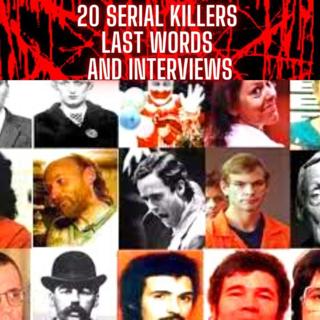
20 Killers. 16 Executed, 3 Given Life Sentence, And One Ed Kemper.
20 Serial Killers - Last Words and Interviews 20 Killers. 16 Executed, 3 Given Life Sentence, And One Ed Kemper. This is a compilation of convicted serial killers last words or interviews before execution or death. This video is meant for educational purposes only. Thank you for watching! Viewer discretion for distressing content.
22 Joulu 20241h 19min
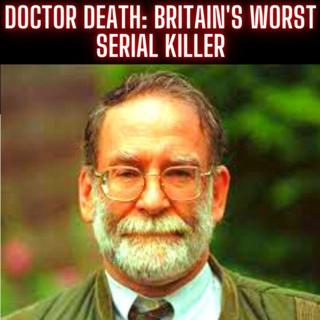
Doctor Death: Britain's Worst Serial Killer (True Crime Documentary)
Doctor Death: Britain's Worst Serial Killer (True Crime Documentary) Britain’s biggest serial killer was a doctor, Dr Harold Shipman. Unsuspected for many years, Dr. Shipman selected his victims from his patient list. There were clues, but who in the community would believe that a doctor would kill his patients? Suspected of killing over 350 people during his career, it was clumsy attempts at forging the will of one of his victims in his own favour that alerted the police and led to his arrest. Found guilty at his trial and jailed for life, Dr Shipman committed suicide never accepting his guilt. Criminal Methodology Shipman carefully selected his victims, targeting elderly women who trusted him as their doctor. He would visit them at home or administer lethal injections during routine consultations, claiming they had died of natural causes. In many cases, Shipman falsified death certificates and medical records to cover his tracks, citing heart failure or other common ailments as the cause of death. Shipman was also known to manipulate his victims’ wills, forging documents to make himself the beneficiary of their estates, further demonstrating his calculated and predatory behavior. Key Events Leading to His Arrest The Murder of Kathleen Grundy (1998): Shipman's last known victim, an 81-year-old widow, raised suspicion after her daughter, Angela Woodruff, discovered a forged will leaving all of Grundy's estate to Shipman. An autopsy revealed lethal levels of morphine in her body. Police Investigation: Police exhumed several bodies of Shipman’s patients, finding consistent evidence of morphine overdoses. His records showed a pattern of deaths shortly after visits, often with fabricated medical histories. Arrest: Shipman was arrested in September 1998, and further investigations revealed an alarming number of deaths under his care. Trial and Conviction Shipman stood trial in October 1999, charged with 15 counts of murder and one count of forgery. In January 2000, he was found guilty and sentenced to life imprisonment without the possibility of parole. The trial was one of the most high-profile in British history, shedding light on the systemic failings that allowed Shipman to go undetected for so long. Shipman's Death Harold Shipman died by suicide in January 2004, hanging himself in his prison cell at Wakefield Prison. His death, though a relief to many, denied families further answers and accountability. Legacy and Impact Shipman’s crimes led to widespread reforms in the UK’s medical and legal systems, including: Tighter regulations on death certification Improved oversight of medical practitioners Greater scrutiny of controlled substances like morphine His case is a chilling reminder of how unchecked power and trust can be manipulated for evil. Numerous documentaries, books, and podcasts have explored Shipman’s crimes, solidifying his place as one of history’s most notorious serial killers.
22 Joulu 202447min

Samuel Little: The Most Prolific Serial Killer In U.S. History - In His Own Words
Samuel Little: The Most Prolific Serial Killer In U.S. History - In His Own Words Tonight on Prime Crime: Part 1 of a special two-part episode. We delve into the story of the most prolific serial killer in United States history, Samuel Little. In Part 1, we explore the killings themselves, how he escaped justice for so long, and his recorded confessions. We also speak with three of the people who actually interviewed Little, and what he had to say was frightening. #SamuelLittle #SerialKiller Best True Crime Stories Podcast 2024 Police Interrogations, 911 Calls and True Crime Investigations
22 Joulu 202423min
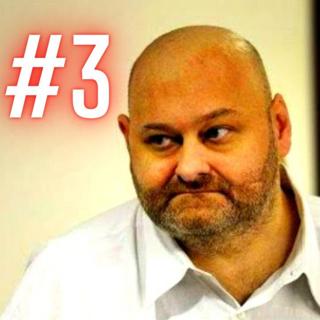
Mothers Day Massacre | Gruesome Murder of Girlfriend and Her Kids | Edward Covington Part 3
Mothers Day Massacre | Gruesome Murder of Girlfriend and Her Kids | Edward Covington Part 3 On May 12, 2008, Freiberg opened the door to her daughter Lisa's mobile home in Lutz and encountered a blood-soaked crime scene. Lisa Freiberg, 26, and her two children, Zachary Freiberg, 7, and Heather Savannah Freiberg, 2, had been beaten, choked and stabbed. Authorities said Covington had attacked the family with a hammer and knife. After killing the children, he dismembered their bodies. Sheriff's deputies found Covington, a former prison guard, cowering in a closet, wearing nothing but underwear and covered in scratches and traces of blood. Charged with three counts of first-degree murder, three counts of abuse of a dead body and one count of animal abuse for killing the family's dog, Covington sat in prison for years, waiting for his day in court. But when his trial began last fall, he stunned everyone, including the public defenders representing him, by abruptly firing them and announcing that he would plead guilty. "I expect you to sentence me to death," he told Hillsborough Circuit Judge William Fuente, adding that this was the sentence he would choose for himself. "I feel it's warranted. The Freibergs feel it's warranted. The state feels it's warranted. I have no problem with this." Covington's decision to forgo a jury trial left his fate entirely with the judge and prompted Fuente to issue a stern warning. He had encountered a similar situation only once before in his career, he told Covington, and he sentenced that defendant to death.
21 Joulu 20241h 10min
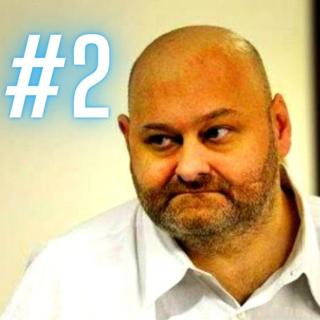
Mothers Day Massacre | Gruesome Murder of Girlfriend and Her Kids | Edward Covington Part 2/3
Mothers Day Massacre | Gruesome Murder of Girlfriend and Her Kids | Edward Covington Part 2/3 On May 12, 2008, Freiberg opened the door to her daughter Lisa's mobile home in Lutz and encountered a blood-soaked crime scene. Lisa Freiberg, 26, and her two children, Zachary Freiberg, 7, and Heather Savannah Freiberg, 2, had been beaten, choked and stabbed. Authorities said Covington had attacked the family with a hammer and knife. After killing the children, he dismembered their bodies. Sheriff's deputies found Covington, a former prison guard, cowering in a closet, wearing nothing but underwear and covered in scratches and traces of blood. Charged with three counts of first-degree murder, three counts of abuse of a dead body and one count of animal abuse for killing the family's dog, Covington sat in prison for years, waiting for his day in court. But when his trial began last fall, he stunned everyone, including the public defenders representing him, by abruptly firing them and announcing that he would plead guilty. "I expect you to sentence me to death," he told Hillsborough Circuit Judge William Fuente, adding that this was the sentence he would choose for himself. "I feel it's warranted. The Freibergs feel it's warranted. The state feels it's warranted. I have no problem with this." Covington's decision to forgo a jury trial left his fate entirely with the judge and prompted Fuente to issue a stern warning. He had encountered a similar situation only once before in his career, he told Covington, and he sentenced that defendant to death.
21 Joulu 202418min
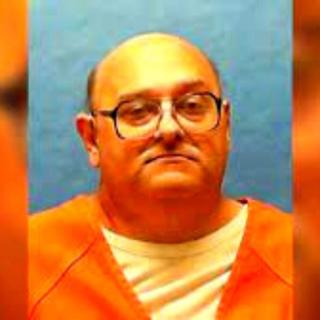
Mothers Day Massacre | Gruesome Murder of Girlfriend and Her Kids | Edward Covington Interrogation
Mothers Day Massacre | Gruesome Murder of Girlfriend and Her Kids | Edward Covington Interrogation Edward Covington, who killed his girlfriend and her two children, sentenced to death TAMPA — Seven years after a triple homicide that Hillsborough County's sheriff called the grisliest he had ever seen, a judge on Friday sentenced Edward Covington to death for the murder of his girlfriend and her two children. In a rejection of defense attorneys' arguments that Covington is mentally ill and should be spared the death penalty, the judge found that death was the appropriate punishment for one of the goriest homicide cases in Hillsborough's history. Covington, 42, absorbed the sentence impassively, surrounded by stone-faced lawyers. Outside the courtroom, Barbara Freiberg, the victims' mother and grandmother, said she approved of the judge's ruling, though she acknowledged it would likely entail years, if not decades, of appeals. "There's a relief knowing that he's going to get what he gave my children," she said. On May 12, 2008, Freiberg opened the door to her daughter Lisa's mobile home in Lutz and encountered a blood-soaked crime scene. Lisa Freiberg, 26, and her two children, Zachary Freiberg, 7, and Heather Savannah Freiberg, 2, had been beaten, choked and stabbed. Authorities said Covington had attacked the family with a hammer and knife. After killing the children, he dismembered their bodies. Sheriff's deputies found Covington, a former prison guard, cowering in a closet, wearing nothing but underwear and covered in scratches and traces of blood. Charged with three counts of first-degree murder, three counts of abuse of a dead body and one count of animal abuse for killing the family's dog, Covington sat in prison for years, waiting for his day in court. But when his trial began last fall, he stunned everyone, including the public defenders representing him, by abruptly firing them and announcing that he would plead guilty. "I expect you to sentence me to death," he told Hillsborough Circuit Judge William Fuente, adding that this was the sentence he would choose for himself. "I feel it's warranted. The Freibergs feel it's warranted. The state feels it's warranted. I have no problem with this." Covington's decision to forgo a jury trial left his fate entirely with the judge and prompted Fuente to issue a stern warning. He had encountered a similar situation only once before in his career, he told Covington, and he sentenced that defendant to death. On Friday, after more than six months of reviewing court transcripts and medical records, Fuente said the horrifying manner in which the three victims were killed outweighed the defense argument that Covington was driven by mental illness. From the outset of the case, Covington's lawyers portrayed him as a deeply disturbed man who, at the time of the murders, was not taking prescribed medications to control his bipolar disorder. Medical records showed that by age 15, he was taking the mood stabilizer lithium. His mother testified that throughout his teenage years and into adulthood, he swung wildly between periods of high energy and deep depression, was repeatedly hospitalized and tried to commit suicide multiple times. By the time his case went to trial, he was taking four different medications — Depakote, Seroquel, Zoloft and Klonopin.
21 Joulu 20241h 33min
